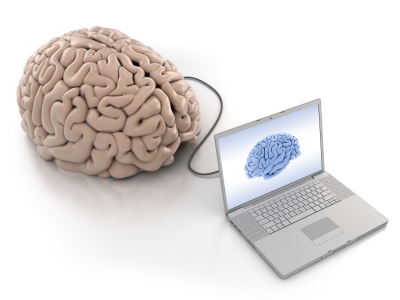Note: This post has been updated and incorporated into 10 Ways to Be a Better Learner – an essential read for the serious lifelong learner.
These days it is easy to get overwhelmed by the wide range of lifelong learning options that technology has made possible. But given that people obviously were able to learn long before the days of Google, TED Talks, and Twitter, it’s worth taking a moment to reflect on how technology enhances our natural learning capabilities and opportunities. This understanding can help us use technology for learning in more productive and beneficial ways.
Here are five key ways in which I see technology boosting learning. For each, I’ve also proposed some questions that might help us improve our use of technology.
Assessment
By the term “assessment” I mean not simply traditional quizzing or testing – though certainly there are ways to test your knowledge on any number of topics, ranging from quantitative aptitude tests to squishier topics like Civic Literacy. Rather, I think technology can be used in a broader sense to gauge what you need to know and at what level. You can get a sense of this by using search and other tools intelligently to track a topic and by listening in to the conversations you find. And look our in particular for good curators in areas that interest you: these people generally provide very good clues as to what the baseline of knowledge is for that area as well as what is on the cutting edge.
- Have I found tools that help me test the knowledge I possess in a particular area?
- Have I identified information sources, conversations, and curators that help me assess ways in which I might want to build my knowledge or skills?
Access
There is no doubt that technology has dramatically expanded access to learning opportunities. The Web has all but eliminated time and distance as barriers to learning in many cases, and a great deal of what is available on the Web – from open educational resources to learning games to podcasts millions of blogs – is free. One challenge, of course, is that with so much available, it can be hard to know where to turn or how to focus – that’s one reason why the curators mentioned above are so important. Even with the help of good curators, though, effective use of technology for learning requires continuous reflection on your own learning goals and exploration of the types of content, experiences, and interactions that may be available. Ask yourself the following:
- When is the last time I went “learnabout” (a mental variation on “walkabout”) to find interesting new resources to support my learning goals?
- What are the types of technology-driven learning experiences I have found helpful, and why? Where can I find more of a similar nature?
Diversity
An extension of both Assessment and Access is that technology opens up the possibility of listening to and interacting with a much more diverse range of people and ideas than we might ever have encountered living in other times. Since I started blogging, I’ve communicated with people of all sorts from across the world, and I have no doubt that doing so has enhanced my knowledge and understanding in a variety of areas. But certainly the opposite can easily be true as well: if we don’t actively use technology to promote diversity we may succumb to homophily. More questions:
- How consciously am I using technology to seek a diversity of learning experiences?
- Do I just do the same old things again and again, or do I challenge myself to find ideas and perspectives I have not considered before?
Action
It’s easy enough to read a blog post, view a video, or tune into a podcast – and certainly these are activities that can support learning – but the technology also provides any number of opportunities for being active rather than passive as a learner; for being not just a consumer, but a producer. For me, this blog is an example – I have used it over the years as a way to explore ideas and consolidate my knowledge by writing about them. I have used podcasting in much the same way. Whatever tools you prefer, there any number of ways you can use technology to review things you have studied, be an active note-taker, and create learning opportunities for others while learning yourself.
- Am I using technology to not just as tool for passive consumption, but as a way to actively engage in learning activities – from taking notes, writing a blog, playing learning games, etc.
- What new approaches – e.g., creating a podcast, producing a short video, starting a Tumblr feed – might align well with my current learning goals?
Order
Finally, technology gives us ways to manage information and learning opportunities that we have never had before. Personally, I think I would be lost at this point without an RSS reader for aggregating and organizing all of the many blogs I track. I channel some Twitter streams into RSS, but I also use Hootsuite, which lets me easily organize people into groups or track particular hashtags. And increasingly I use Evernote as a way take notes and sync them across my laptop, iPad, iPhone, and the Web. I could go on and on, but you get the point. If you would like a more resources on the range of tools that can be used for organizing and tracking learning, you might want to have a look at the Learning 2.0 resource area at Tagoras. While aimed at trade and professional associations, there is plenty there that is useful to individual lifelong learners.
- Am I using technology tools effectively to help me make sense out of the chaotic flow of new information and experiences?
- Have I explored the full capabilities of the tools that I am using so that I can get the most out of them? (Hint: Return to “Assessment” above to start getting a bead on what you may need to know to use a particular tool effectively.)
That’s it. Of course, just do a bit of exploring here on Mission to Learn – perhaps starting with the Tools and Tips category – and you will find any number of ways to incorporate technology into your lifelong learning efforts. And please comment to share any tips or insights you have.
Jeff
P.S. – This post is part of the 10 Ways to Be a Better Learner series. If you like it, please use one or more of the social buttons on this page to share it.





